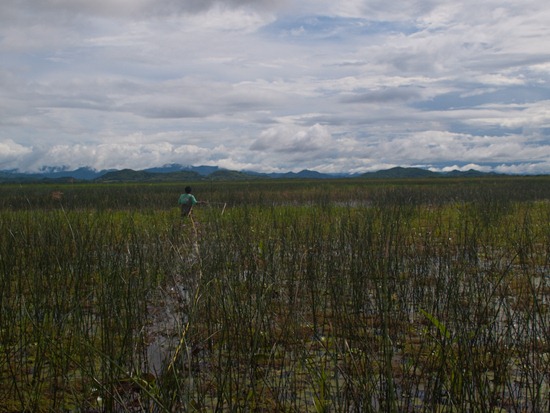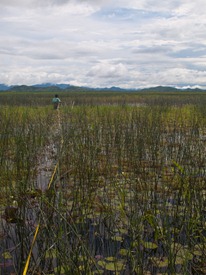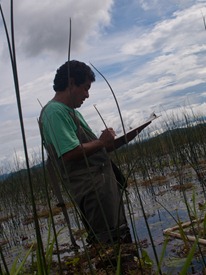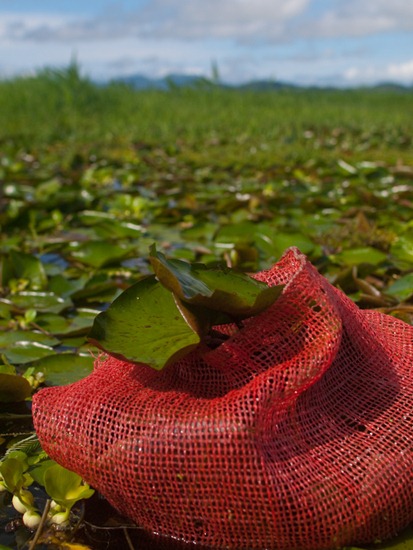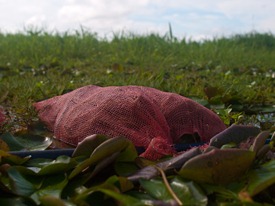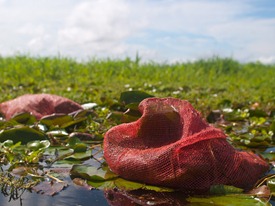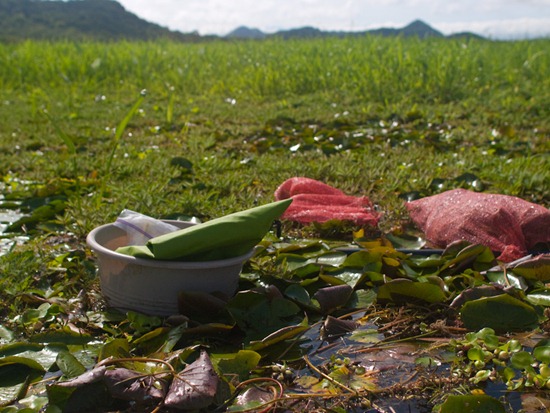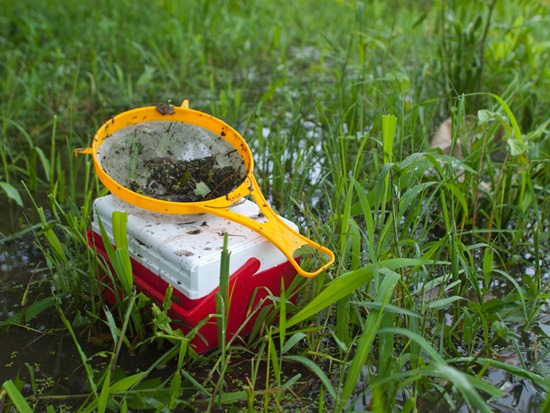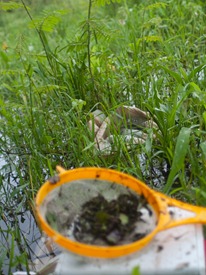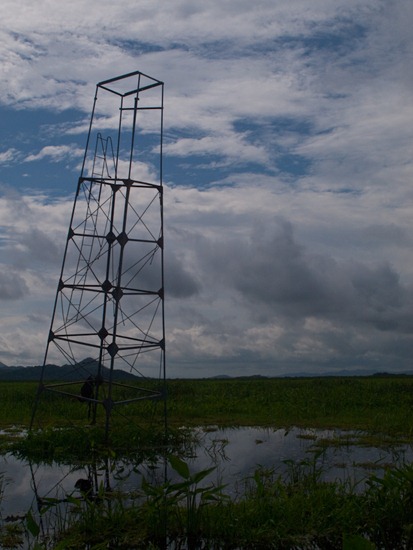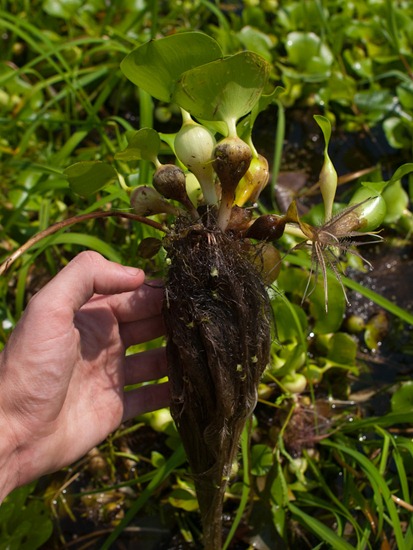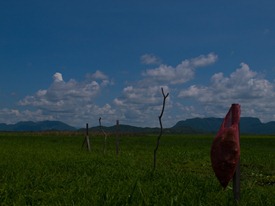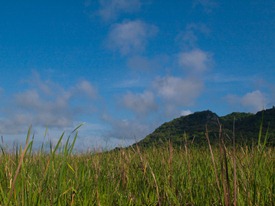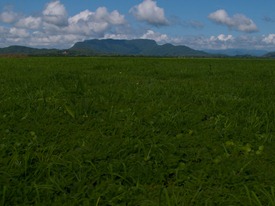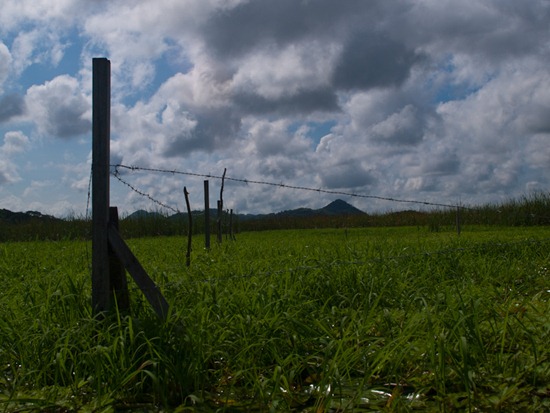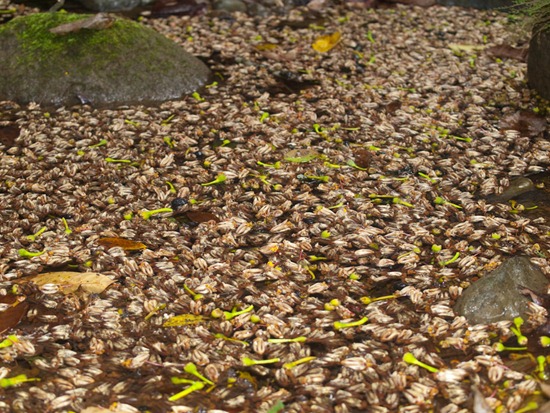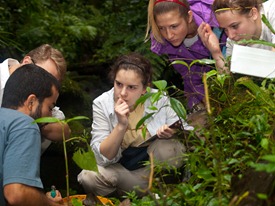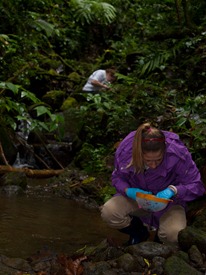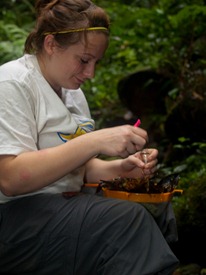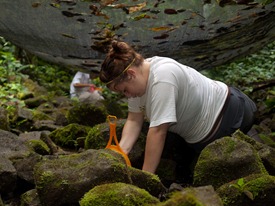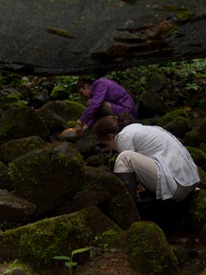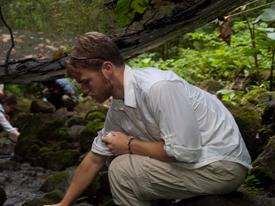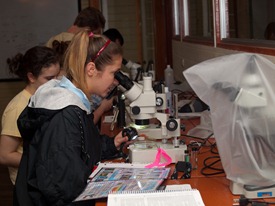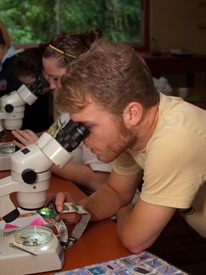A vertical panorama. This tree is enormous, but I couldn’t find a tag from Oscar Rocha and Jim Hemrick’s genetic diversity and seed dispersal studies. I have exact GPS coordinates though… just in case.
Tag Archives: Research
Plant species presence/absence transect
I assisted Rafa in conducting a transect to identify plant species presence/absence the other day. I discovered that I don’t know the grasses (Poaceae) well, but most of the other macrophyte species, I’ve got down. I was also reminded that it’s generally a bad idea to have electronics in the wetland here around 3 pm, as that’s when the rains usually come. Luckily, it’s easy to see and hear the rain coming.
Nymphaea collection
Tadpole catching equipment
Bird Tower
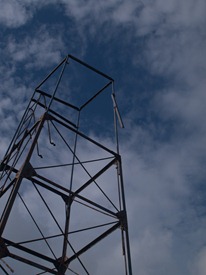 |
I climbed the broken down bird tower in the center of the wetland yesterday in search of tadpoles. I haven’t had luck on my own, but Mahmood volunteered to assist me. Another option may be to hormonally induce adult frogs to release their eggs/sperm in the lab. However, that only solves the problem of obtaining tadpoles to manipulate, it doesn’t help in estimating natural densities, which is important to know if I want to argue an important role of tadpoles in decomposition. The wetland is significantly deeper this year than it was last, at least for the middle of June. What’s more, the vegetation is thicker – the Neptunia has even started to flower! The tower, although flimsy, gave me a pretty good view of how solid the vegetative cover is – maybe 5% of the wetland is open and can be seined for tadpoles. Of the points I’ve tried, I’ve seen zero tadpoles…. By the way, sorry for not taking a photo from the top of the tower – I trusted it with my life, but not my camera. |
Preparing to decompose
Made it
Rio Camarones Oraganic Matter input
I study decomposition in aquatic systems, and most research in this area focuses on leaves as the major source of outside input of organic matter into these systems. However, in tropical systems, flower and fruit material can make up a substantial portion of OM input in streams, as discuss in Tropical Steam Ecology and evidenced in this photograph.
While sampling, flower parts rained into Rio Camarones in Sirena, completely covering the surface. And, just like in Ohio, the stream was filled with abundant crustaceans, probably acting as shredders!
Working in San Ramon
The Help
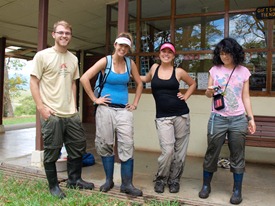 |
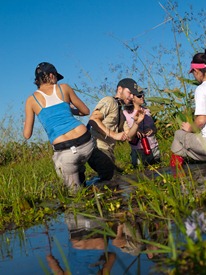 |
Marc, Alexa, Denise and Amber.


